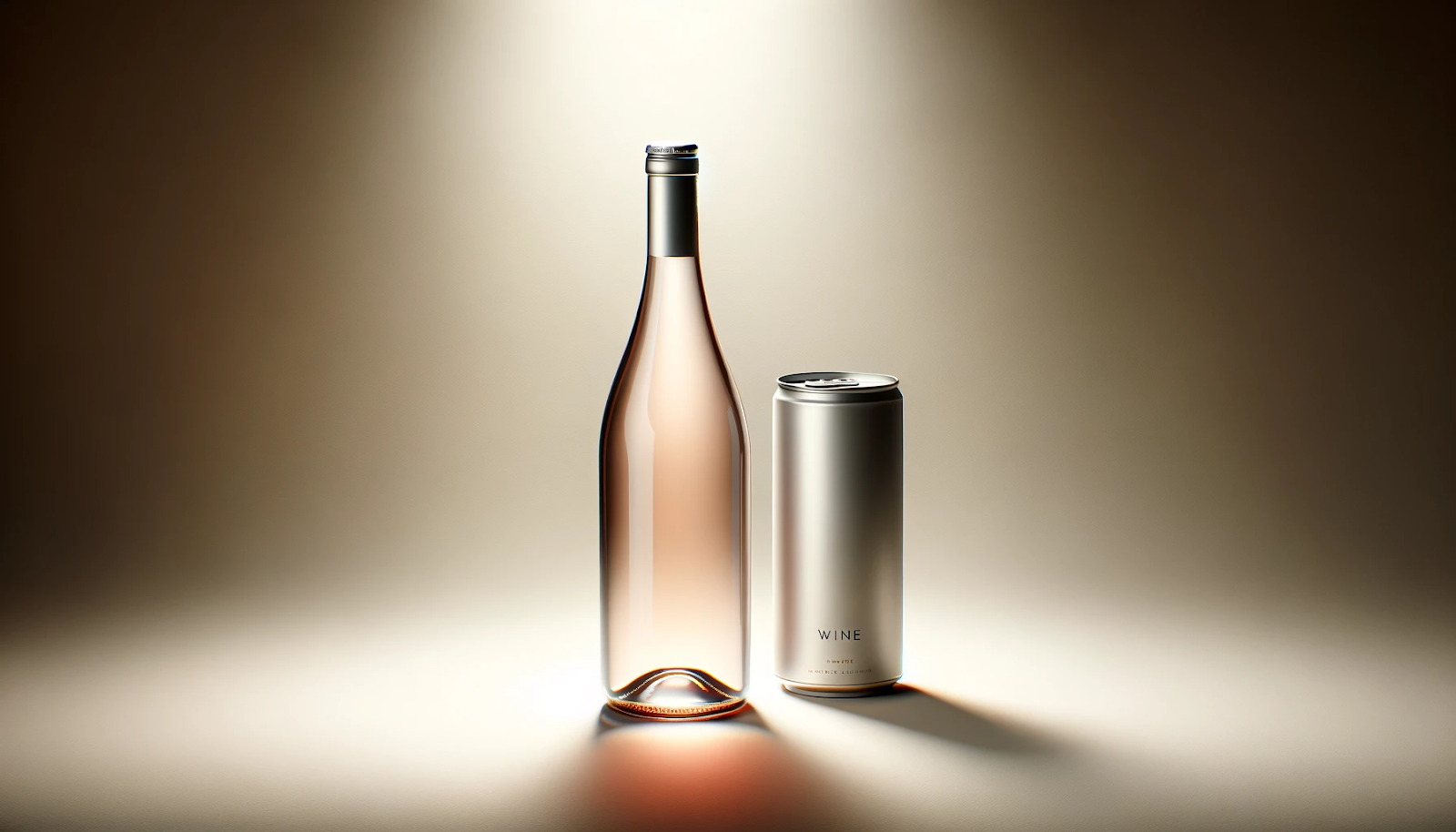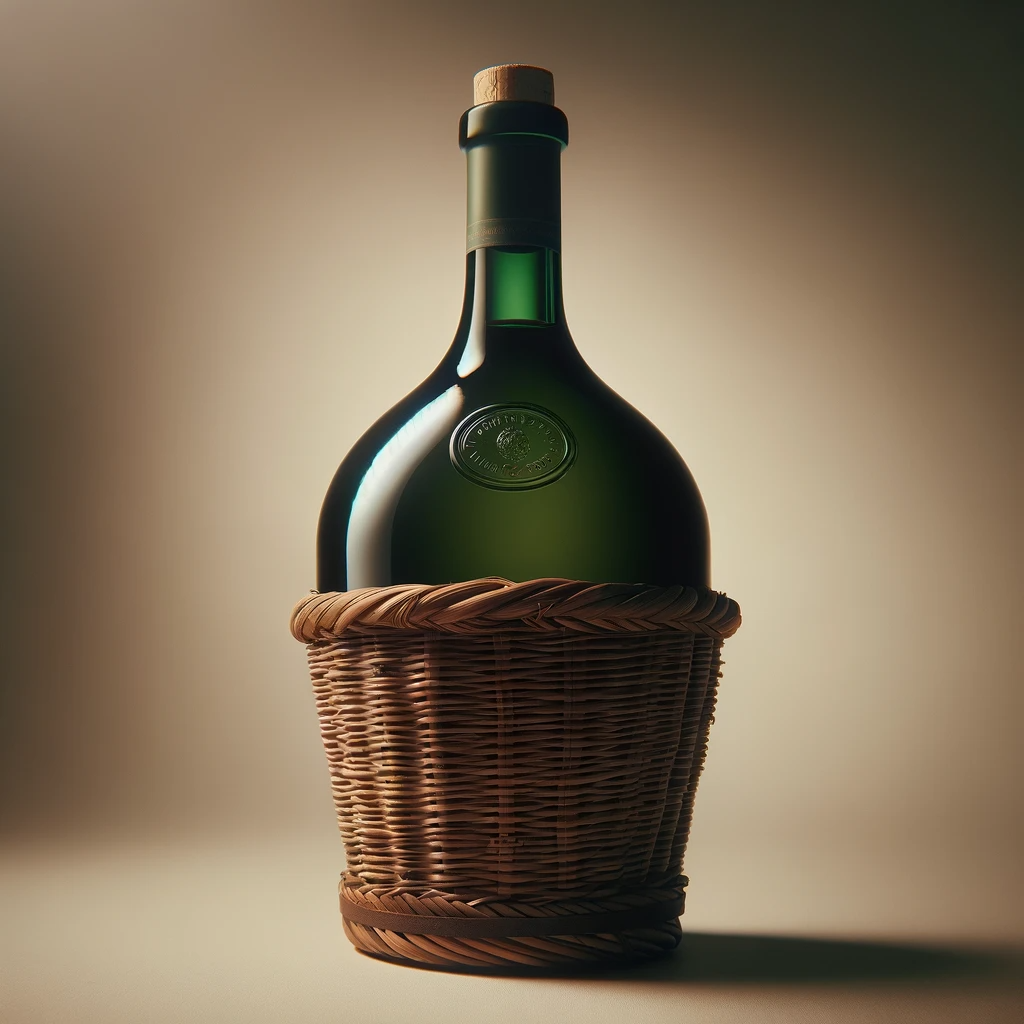- Wine Color/Type
- Top Occasions
- Unique Wines
- Surprise Me!
Wine Packaging: More Than Meets the Eye
Wine packaging, often overlooked, is a vital component of our wine-tasting experience. It's far more than just a container; it's a storyteller, a silent salesman that guides our choices and preferences. This journey of packaging, from its historical roots to the latest trends, reveals how deeply it influences our perceptions and buying behaviours.
When did you buy the last bottle of wine due to its design?
Canned wine can be of all qualities. (Photo: DallE)
Historical Evolution of Packaging
Packaging is as old as wine production itself. Initially, wine was stored in amphorae or wooden barrels, but with time, glass bottles gained prominence. Introduced in the 17th century, glass bottles became symbols of heritage and quality.
The classic Bordeaux bottle, known for its high shoulders, and the Burgundy bottle, recognized for its sloping design have grown to prominence. These traditional designs have stood the test of time and continue to be preferred by wine producers due to their association with authenticity and prestige.
However, the 20th and 21st centuries brought significant changes with the introduction of screw caps, synthetic corks, and bag-in-boxes.
The Psychological Influence of Packaging
Wine packaging's impact on consumer psychology is profound. The colour of the bottle, its shape and its material all influence the consumers.
Colour: Darker bottles are often associated with premium wines. Clear or light-colored glass usually contains lighter, more refreshing styles.
Shape: Traditional shapes are often preferred for classic examples, whereas innovative shapes attract a younger, more adventurous audience.
Material: Glass conveys quality and tradition, while materials alternative to glass, like cans or cardboard, can signify affordability or eco-friendliness and a reduced carbon footprint. Tactile elements like embossing or unique textures enhance the perceived value and quality of the wine.
Some like it modern, others traditional. This is a classic Chianti Classico Bottle Shape. (Photo: DallE)
The Art of Label Design
Wine label design is critical in packaging, as it's the visual identity of the wine. The label's imagery, font, and color scheme evoke emotions, tell a story, and convey the brand's personality.
Classic labels with elegant fonts and subtle colors often appeal to those seeking traditional, high-quality wines. Conversely, modern labels with bold colors and innovative designs can attract younger drinkers seeking novelty. The label also provides essential information like the origin, grape variety, and vintage, guiding the wine lovers choice, particularly among more knowledgeable enthusiasts.
Diverse Packaging for Diverse People
The variety in wine packaging caters to a broad spectrum of consumer preferences. Traditional glass bottles are still dominant, favored for their ability to preserve quality. However, alternative packaging forms like box and canned wines are gaining traction among younger consumers who prioritize convenience. These variations also reflect regional and cultural influences on wine consumption.
Sustainability has become a critical factor in wine packaging. Environmental awareness drives the interest in lighter glass bottles, recyclable PET bottles, and 100% recyclable materials.
Sustainable practices extend to label production, with a shift towards recycled paper and soy-based inks. Wineries are adopting minimalist packaging designs to reduce material use, responding positively to a consumer base that increasingly values sustainability.
Technological Innovations
The integration of technology in wine packaging is bringing consumers to the digital era. Smart labels with NFC chips or QR codes provide a gateway to a wealth of information about the product. Augmented reality (AR) brings labels to life, offering an interactive experience that attracts tech-savvy consumers.
Resealable bottles and improved preservation technologies reflect a growing demand for convenience and quality. These innovations cater to consumers who value the flexibility of enjoying a single glass of wine without compromising the rest of the bottle.
The Future of Your Wine Bottle
As we look ahead, the world of packaging is set to evolve further, driven by sustainability concerns, technological advancements, and shifting preferences. The wine industry faces the challenge of embracing these packaging options without losing the heritage and quality that wine enthusiasts cherish. Packaging will continue to be a key element in shaping consumer perceptions and choices.
You can discover all about the newest sustainable innovations in wine packaging in this VinoVoss article.
Peter Douglas
Latest articles


